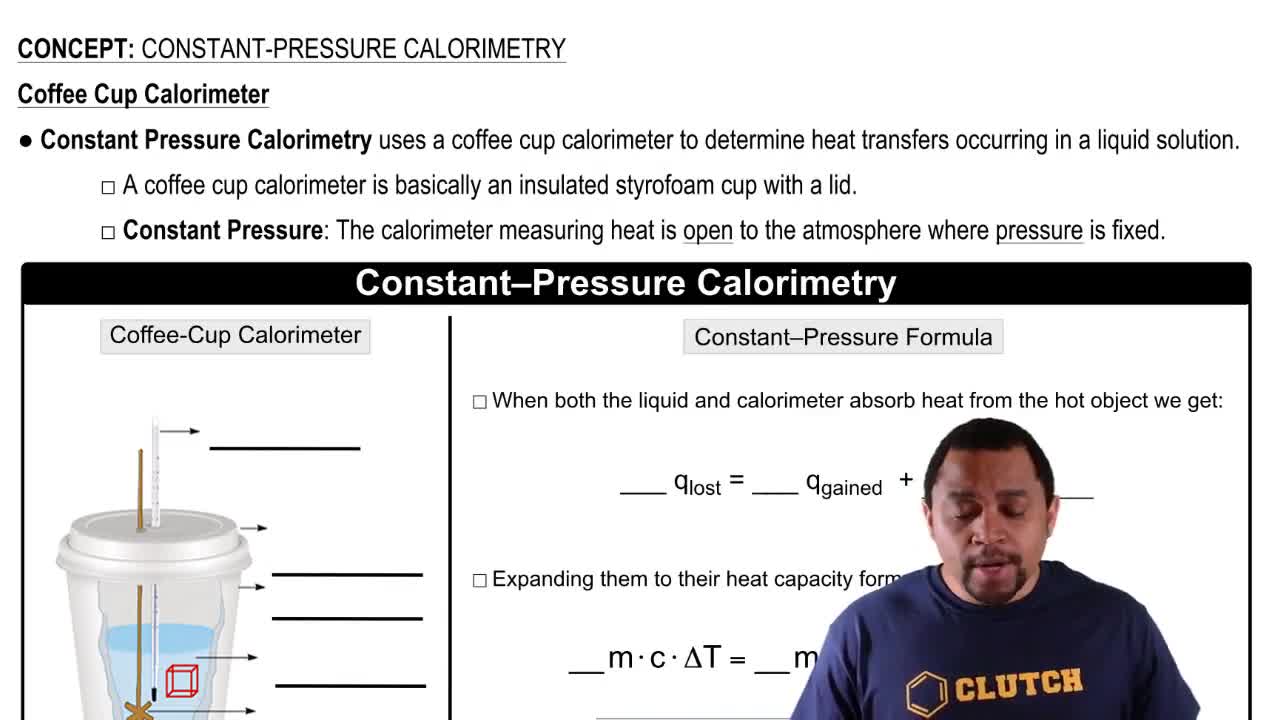Here are the essential concepts you must grasp in order to answer the question correctly.
Enthalpy (H)
Enthalpy is a thermodynamic property that represents the total heat content of a system. It is defined as the sum of the internal energy of the system plus the product of its pressure and volume (H = U + PV). In constant-pressure processes, the change in enthalpy (ΔH) is equal to the heat exchanged (q) with the surroundings, making it a crucial concept for understanding heat transfer in chemical reactions.
Recommended video:
First Law of Thermodynamics
The First Law of Thermodynamics states that energy cannot be created or destroyed, only transformed from one form to another. In the context of a chemical process, this means that the change in internal energy (ΔE) of a system is equal to the heat added to the system (q) minus the work done by the system (w), expressed as ΔE = q - w. This principle is essential for analyzing energy changes during chemical reactions.
Recommended video:
First Law of Thermodynamics
Constant-Pressure Process
A constant-pressure process is a thermodynamic process that occurs at a fixed pressure, allowing for the direct relationship between heat transfer and enthalpy change. In such processes, if the system releases heat (q < 0), the enthalpy of the system decreases (ΔH < 0). Understanding this relationship is vital for predicting how energy changes affect the state of a system during chemical reactions.
Recommended video:
Constant-Pressure Calorimetry
 Verified step by step guidance
Verified step by step guidance

